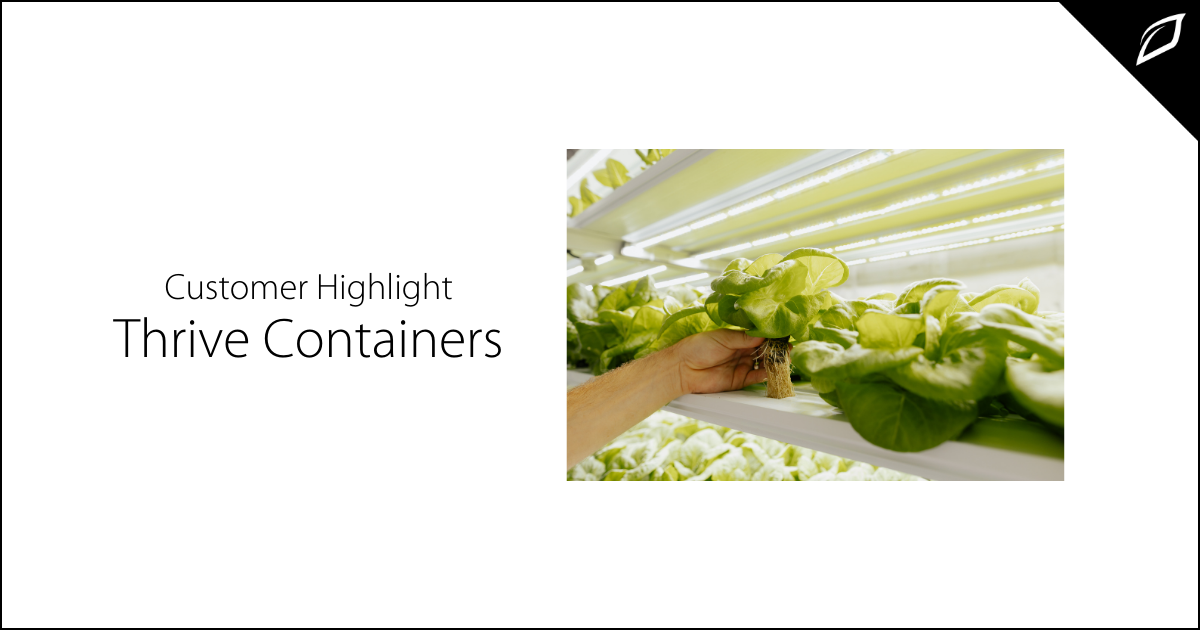CropBox - Vertical Crop Consultants
South of the North Carolina state capital of Raleigh is the small rural town of Clinton, N.C., the headquarters for Vertical Crop Consultants, or...
2 min read
Joy King : Feb 27, 2021 4:00:00 AM

Despite a desire for locally grown produce, almost half of the fresh fruits and vegetables bought by American's last year were grown outside of the United States. According to the USDA, in 2008, organic produce grown in the US accounted for less than one percent of total crop acreage, and improvements have been slow.
The desire for produce grown locally, combined with advancements in technologies, has created a demand for sustainable container farming worldwide. Let's take a look at what the hype is all about.
What is a Container Farm?
Container farming or gardening is growing plants or crops in retrofitted shipping containers instead of planting them in the ground. Most use insulation determined by localized climate and employ modern, smart farm technology, including hydroponics.
Benefits of Container Farming
The many benefits of container or shipping container farming are what make this growing method popular. Besides providing fresh, local produce, using containers to grow food or other plants saves valuable resources like water and fertilizers and produces crops year-round.
Because the container is, well, self-contained, there's a barrier of protection against harsh exterior conditions along with pests and pollution. The lack of pests means you can grow your crops without the need for expensive and harmful pesticides.
But there are other benefits as well. You can buy container farms that are plug-and-play. Meaning you don't have to modify the container, saving you time. Harvesting is often quicker and requires little to no equipment, unlike outdoor crops.
The Technology to Make it Happen
One of the most important aspects of container farming is the technology that monitors and controls environmental conditions and irrigation. Since most container farms prefer the hydroponics method of growing, how you feed and irrigate becomes a top priority. Whether you prefer the ebb-and-flow or vertical drip irrigation system, container farms are incredibly water-efficient, using less water per day than the average dishwasher.
Along with controlling environmental conditions like temperature, humidity, lighting, and airflow, automation technology can, in most cases, be accessed via a mobile app. Using an app, users can monitor and control just about every aspect of their container farm from anywhere they have internet access. By providing remote access, these technologies enhance container farmer's experience and provide much-needed peace of mind.
Final Thoughts
There are detractors to growing in container farms; they can be costly, so do your research before you buy and make sure that if you buy a plug-n-play container, you work with a company that offers top-notch customer support like Thrive Containers. Containers can be complicated to set up, so having support in place will assist in mitigating frustration.

South of the North Carolina state capital of Raleigh is the small rural town of Clinton, N.C., the headquarters for Vertical Crop Consultants, or...

In November 2020, Thrive Containers launched its new intelligent container technology to disrupt the commercial farming industry. With COVID-19 and...

Dr. Robert Flannery is the first Ph.D. in the United States with certified technical expertise in growing commercial cannabis. He earned his...